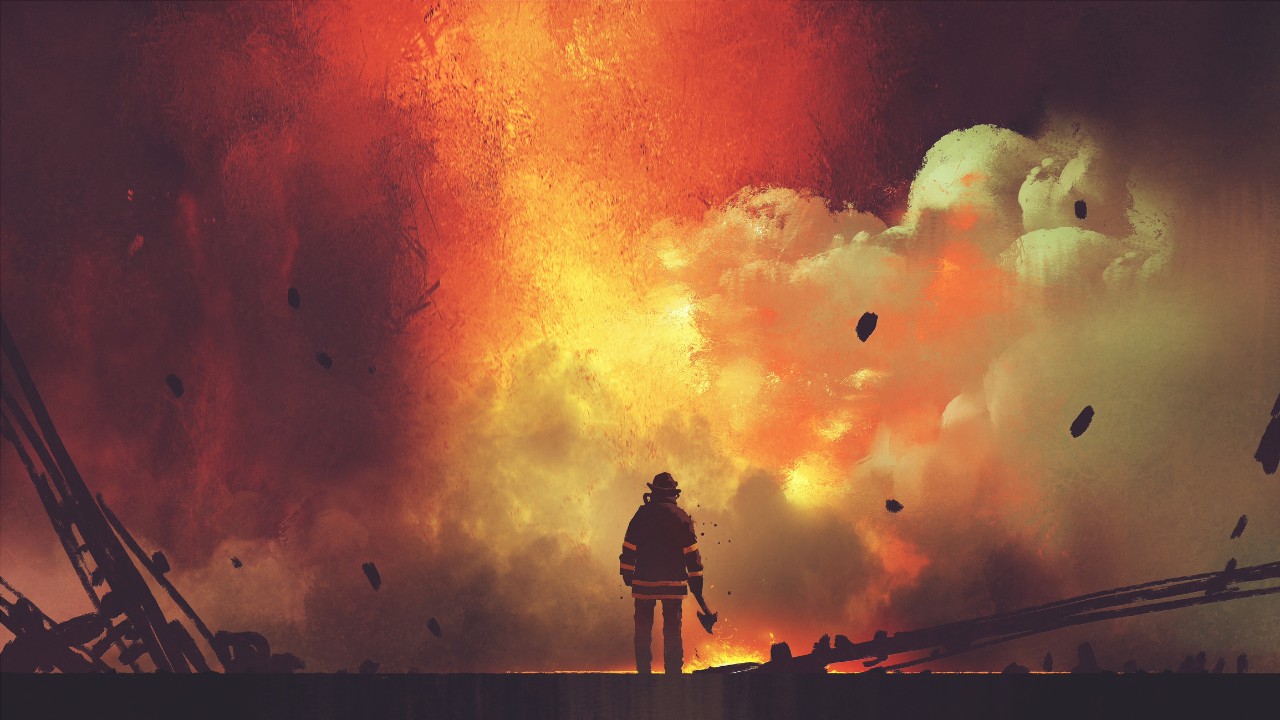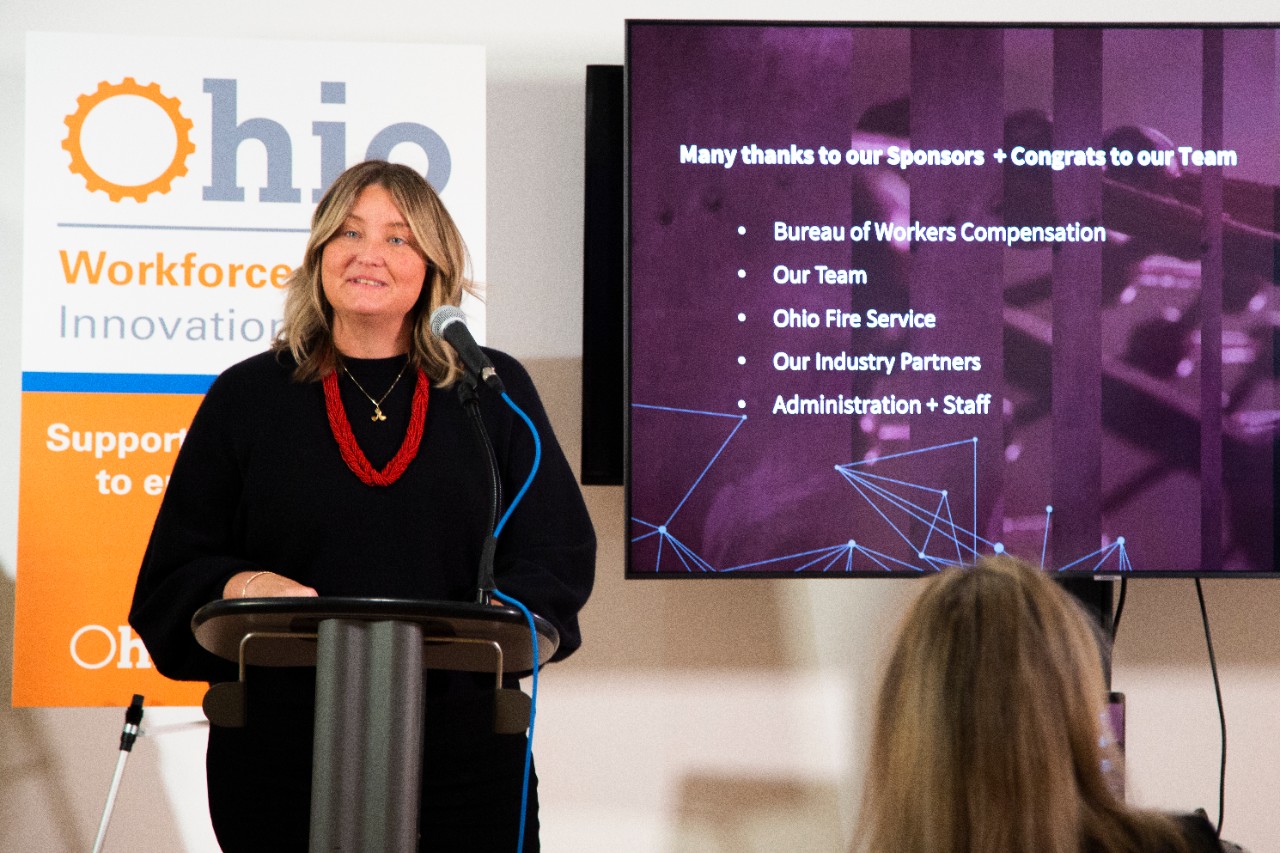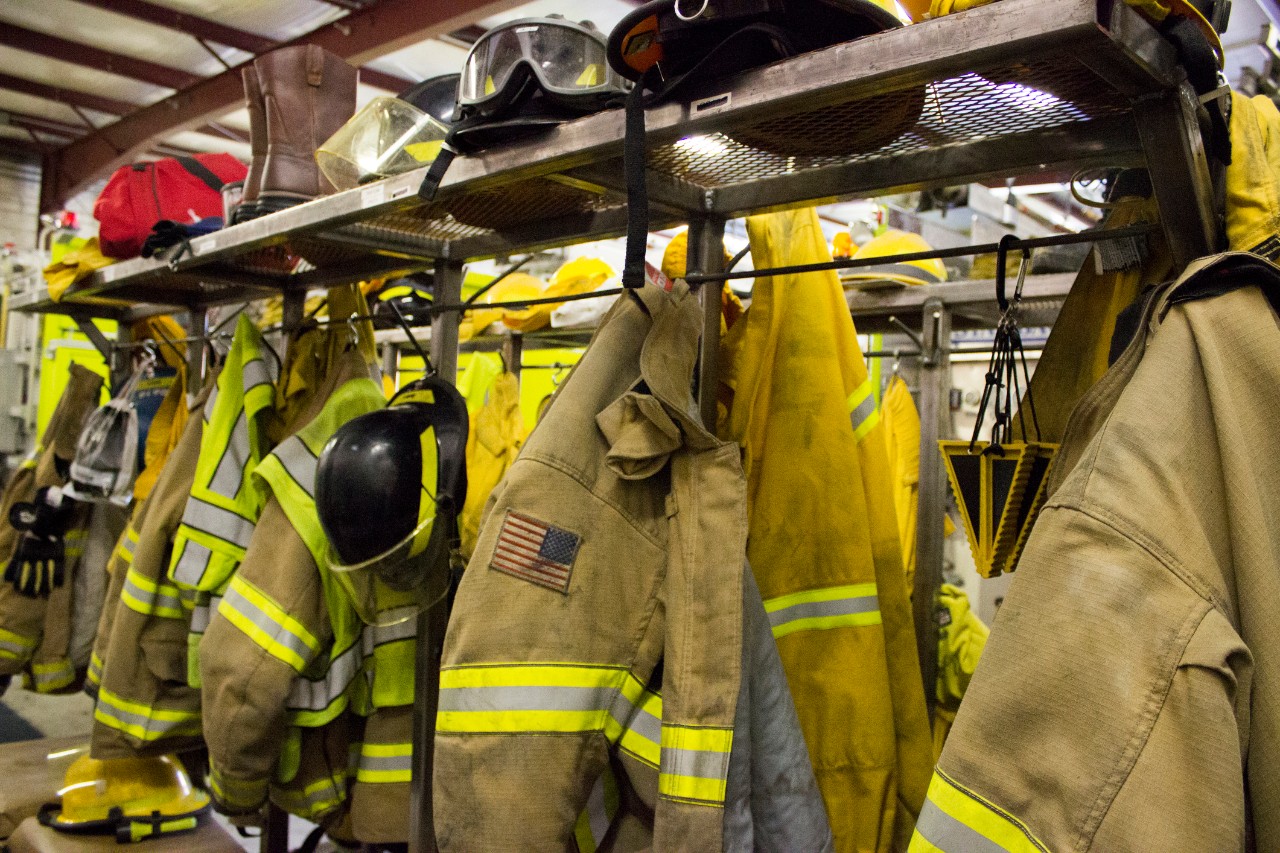
State grant allows for UC’s continued research on firefighter protective gear
Ohio Bureau of Workers Compensation awards researchers here over $2.5 million
A team of UC researchers across three colleges has been awarded an additional $1.5 million state grant to continue research on improving firefighter protective gear.
In 2022, the Ohio Bureau of Workers’ Compensation (BWC) awarded a UC team an initial $1.2 million to provide proof of concept on the development of a firefighter jacket liner that brings a firefighter’s body temperature down through advanced cooling technology and protects the body from other external hazards.

Current firefighter coats hang in the ready. Photo/iStockphoto/eyphoto.
State grant to research and develop
That grant, and the new $1.5 million grant to carry the proof of concept to commercialization, comes from a BWC Workforce Safety Innovation Center initiative for the benefit of workers employed in various fields including first responders, manufacturing, agriculture and other sectors requiring additional protection while on the job.
The project, led by Ashley Kubley, associate professor of fashion design in UC’s College of Design, Architecture, Art, and Planning (DAAP), includes 20-plus researchers from DAAP and UC’s College of Engineering and Applied Science (CEAS) and College of Medicine.

Research team leader Ashley Kubley, an associate professor of fashion design in UC’s College of Design, Architecture, Art, and Planning (DAAP). Photo provided by DAAP.
"Today's research is different — as we move into designing a more connected, integrated world of products and systems — we need teams of experts with different expertise, skills and perspectives to solve these interdisciplinary problems,” says Kubley.
Between 2022-23, the team designed, developed and user-tested their prototype and established its effectiveness for moderating the core body temperatures in firefighters during service by providing on-demand cooling inside their turnout coat. Preliminary findings show that the new garment outperformed the current industry standard turnout coats along several measures and was effective at reducing firefighter exposure to harmful heat stress and environmental contaminants.
The team is excited to be involved in helping to better protect Ohio firefighters who put their life on the line for us each day.
Ashley Kubley Associate professor of fashion design
The concept
According to Kubley, the team was able to effectively redesign the thermal and moisture management fabrics that are used in current turnout gear, making them thinner, lighter and more able to spread heat and wick moisture. A miniaturized wearable cooling system works in tandem with a patented carbon nanotube fabric system to create a cooled microclimate.
The system also provides new shielding, strength and protective features that have not been available in fire-compliant textile materials for personal protective equipment before. These innovations were developed by the design and engineering teams at UC using resources in the Nanoworld Laboratory in CEAS, the Fashion Technology Center and Rapid Prototyping Center at DAAP, among others.
“No other type of cooling system of this kind exists for firefighters due to the high barrier for entry into the market. The team is excited to be involved in helping to better protect Ohio firefighters who put their life on the line for us each day,” says Kubley.

Personal protective gear in a fire station . Photo/iStockphoto/Fred Mastison
Research partners
The team partnered with the National Institute for Occupational Safety and Health National Personal Protective Technology Laboratory in Pittsburgh, Pennsylvania, to run simulation tests using a thermal, sweating mannequin to validate the system prior to human testing.
They also partnered with LION Protects, a manufacturer of personal protection equipment in Dayton, Ohio, to test the new materials for compliance with national fire protection agency standards and also to manufacture the fire coat samples in their production facilities.
The team then recruited and tested the design with firefighters from departments around the Cincinnati area. Firefighters participated in ergonomic lab testing in the Biomechanics and Ergonomics Research Laboratory at UC and in live burn training at the Great Oaks Career Campus in Sharonville, Ohio.
Using sensors, the researchers measured heat flux, core body temperature and heart rate during activity which allowed the team to evaluate the firefighters' body response to the intervention and environment in real time. Through focus groups, observation and assessment sessions, they employed user feedback to improve the design and functionality of the intervention for better usability and operation, comfort and protection and safety.
Featured image at top iStockphoto/Grandfailure
Impact Lives Here
The University of Cincinnati is leading public urban universities into a new era of innovation and impact. Our faculty, staff and students are saving lives, changing outcomes and bending the future in our city's direction. Next Lives Here.
Related Stories
UC Research Ranking Climbs
January 10, 2002
The University of Cincinnati moved up in two different national rankings established by the National Science Foundation (NSF) to compare college and university research efforts.
Three of Four UC Fulbrights Scholars from McMicken
January 28, 2002
Tainted water supplies in Bangladesh, international security and missile defense, transformations in Mexico and greater understanding of India - this varied list sums up the work of four Fulbright Scholars at the University of Cincinnati who are concentrating on real-life issues involving our neighbors around the world.
Assistant Dean Leads Mascot Mania
October 13, 2002
Assistant Dean Jeannette Songer and her crew of student workers are pleased to introduce Elizabeth Bearcat Browning, the McMicken College of Arts & Sciences entry for "Mascot Mania," a new decorating contest modeled after Cincinnati's Big Pig Gig.
Celebrating CAS' Deep Roots in Cincinnati
November 11, 2002
UC s College of Applied Science (CAS) is set to celebrate its rich heritage as the quiet cornerstone upon which Cincinnati industry, learning and culture has built itself since the school s founding on Nov. 20, 1828. The school was founded as the Ohio Mechanics Institute, the first school dedicated to technical education west of the Alleghenies. On Wednesday, Nov. 20, the college will toast its birth with a Founder s Day reception from 4:30-6:30 p.m. in the first floor of the CAS Administration Building, 2220 Victory Parkway.
Students' New Tank Tops Much More Than a Fashion Statement
November 12, 2002
A new shirt created by UC co-op students Jaleen Francois and Regina Schneider will fight sexual assault, $10 at a time.
Students Step Up to the Plate for this Final Exam
November 26, 2002
Civility is the main course for UC students set to take their final exam at Pigall's restaurant on December 4.
Real-World Project is All About Pressure
December 2, 2002
UC fashion students are designing better pressure garments to aid children and teens suffering from burn injuries.
Bono, Chris Tucker Visit UC To Discuss Africa
December 5, 2002
U2's Bono and comedian-actor Chris Tucker led a delegation from the DATA organization who came to UC to talk about potentially catastrophic problems in Africa.
Interior Design and Architecture Programs Make the Grade
December 12, 2002
The University of Cincinnati houses prized programs in interior design and architecture, according to an annual survey of U.S. architecture firms.
New Year's Help for Those Looking to Kick the Habit
December 20, 2002
Quitting smoking consistently ranks among the top three resolutions made by New Year's resolvers each year.
